
Photo by Nathaniel X. Boëchat, Friends of Acadia, NPS The diversity of Acadia National Park is reflected in its plant life; more than 1,100 plant species are found here. A variety of environments called 'ecosystems' exist throughout the park—from wetlands to coastline to mountains, forests, and freshwater environments such as streams, and lakes and ponds. Mosses, Lichen, and MushroomsIf you find a hike in Acadia, you are sure to see mosses, lichens and mushrooms. The dense tree cover and wet areas make Acadia the perfect home for these species. But what if we told of you that only one of these was truly a 'plant?'Mosses are true plants, though they don't have the vascular system of most plants, which is why they grow very small. They are very opportunistic plants, able to grow on rocks, trees, and along stream beds. But they need moisture and without an adequate supply of water, mosses will dry out, not be able to reproduce, and eventually die. Mushrooms and other fungi aren't technically plants, though people often think they are and they share many qualities with plants. Not quite a plant, not just a fungus, lichen doesn’t fit easily into any one category. A lichen is a partnership between two or more living things, usually a species of fungi benefiting from one or more plant-like organisms such as green algae or cyanobacteria 
Mosses
Get a close up look at this class of plants that carpet moist areas such as rocks, trees, and along stream beds. 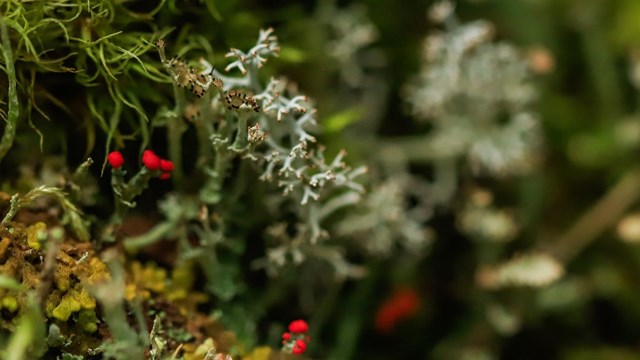
Lichen
Not quite a plant, not just a fungus, learn more about these unique organisms that paints so much of Acadia's landscape. 
Mushrooms & Other Fungi
Driving all the biodiversity we see above ground, from the trees to wildflowers, is an underground web of fungal life. 
Photo by Ashley L. Conti, Friends of Acadia, NPS GrassesAbout a quarter of the plants that one encounters at Acadia National Park appear "grass-like." The amateur would probably call all of these grasses, but in fact some are sedges and some are rushes. Here is a little rhyme to help tell the three apart: "sedges have edges, rushes are round, and grasses have joints." Sedges usually have a triangular stem, rushes have round stems, and grasses have a jointed stem. Sedges, grasses, and rushes often inhabit wet areas. 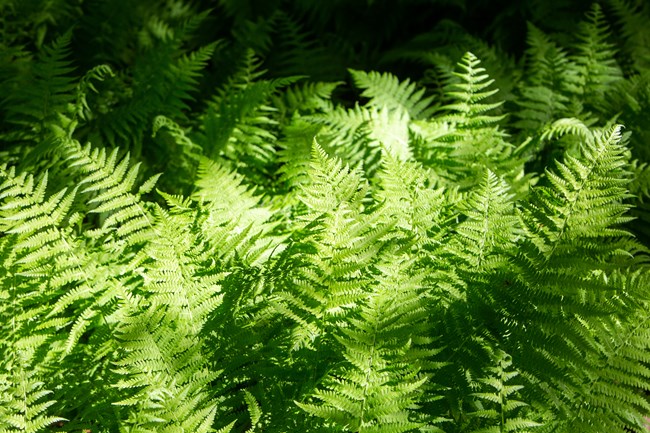
Photo by Emma Forthofer, Friends of Acadia, NPS FernsFerns thrive in cool, moist, shaded areas, which are quite common on the coast of Maine. Some of the easier-to-recognize ferns are species of rock polypody, which appear almost identical and are often found growing in leaf litter duff on top of large rocks. The fronds are singular and look like they are growing in a small colony or mat. Another pair of related common ferns are cinnamon fern and interrupted fern. Both are large ferns with vegetative fronds arranged in whorls around the center. Cinnamon fern has separate, fertile, spore-producing fronds which sprout from the center of the plant in spring. These fronds are a cinnamon-like golden brown in color, which accounts for the plant's common name. Interrupted fern produces fertile leaflets in the upper third of the vegetative fronds, hence the frond is "interrupted" by the smaller fertile leaflets "within" the frond. 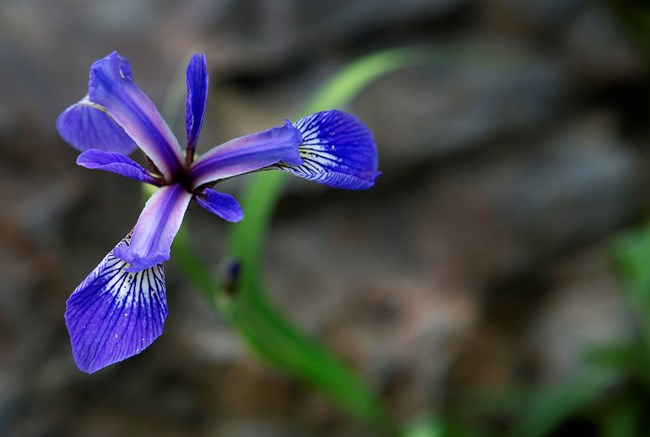
Photo by Ashley L. Conti, Friends of Acadia, NPS WildflowersIf you are in a wooded area of Acadia National Park, you are likely to find common, native woodland flowers, such as wild lily-of-the-valley (Maianthemum canadense), bunchberry (Cornus canadensis), goldthread (Coptis trifoliaformerlyC. groenlandica), bluebead lily (Clintonia borealis), and starflower (Trientalis borealis). In August and September Acadia's native wildflowers, the asters and goldenrods, are in full bloom. Trees and ShrubsAcadia National Park sits in the boundary area between two forest zones - eastern deciduous forest and northern boreal forest. Eastern deciduous forests are more southern and are typically dominated by broad-leafed trees that drop their leaves every year known as deciduous trees. In Acadia these commonly include trees such as oaks, maples, ash, birch, sycamore and beeches.Northern boreal forests stretch down from the arctic and are dominated by evergreen trees, or conifers that mostly keep their deep green leaves, called needles, year-round. These types of forest are more dominated by spruce and fir trees and include other conifers such as cedar trees, hemlocks, pine trees, and cypress trees. As you experience Acadia, you will see both of these forest types mixing and blending into one another. Beneath these tall trees, various shrubby plants vie for sunlight and food. Various diseases and pests, such as red pine scale and the hemlock woolly adelgid, threaten the health and wellness of specific species of Acadia's trees. Weakened by climate change and other factors, some of these tree species are being pushed to brink of elimination, threatening to change Acadia's forests forever. 
Conifers: Evergreen Trees and Shurbs
Cone bearing plants with dark green, needle like leaves are a prominent feature of the Acadia landscape. Freshwater and Marine PlantsLife abounds in the serene waters of Acadia’s from freshwater lakes, ponds, and streams to freshwater wetlands and saltwater marshes, and beaches and the rocky coastline. From amphibians to waterfowl and fish, wildlife depends on aquatic vegetation. In freshwater communities, plants can float unattached to the bottom or be rooted plants, with leaves that may emerge from the water, float on the surface, or be completely submerged.Marine plants such as seaweed can float in the open ocean or, like rockweed, attach to rocks. 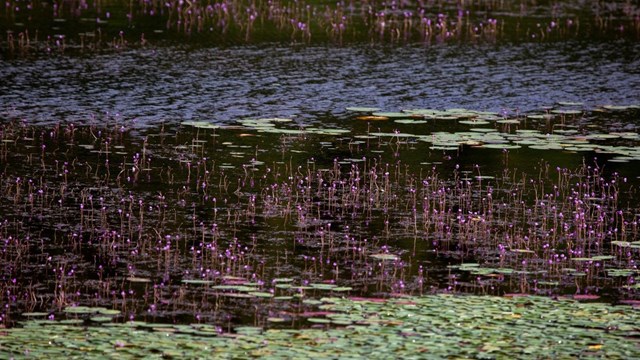
Freshwater Plants
Life abounds in the serene waters of Acadia’s lakes, ponds, and streams. From waterfowl to fish, wildlife depends on aquatic vegetation. 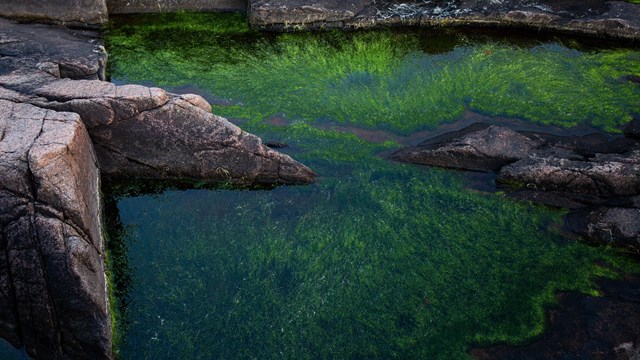
Saltwater Plants and Marine Algae
Learn more about the remarkable life of plants that thrive in Acadia's saltwater environments including tidepools. Threatened and Endangered Plant SpeciesAlmost one quarter of Acadia's flora is non-native, and about 25 species are state-listed rare plants. It is evident that 300 years of European settlement and land use have changed the composition of plant communities throughout Acadia National Park. |
Last updated: November 1, 2023
